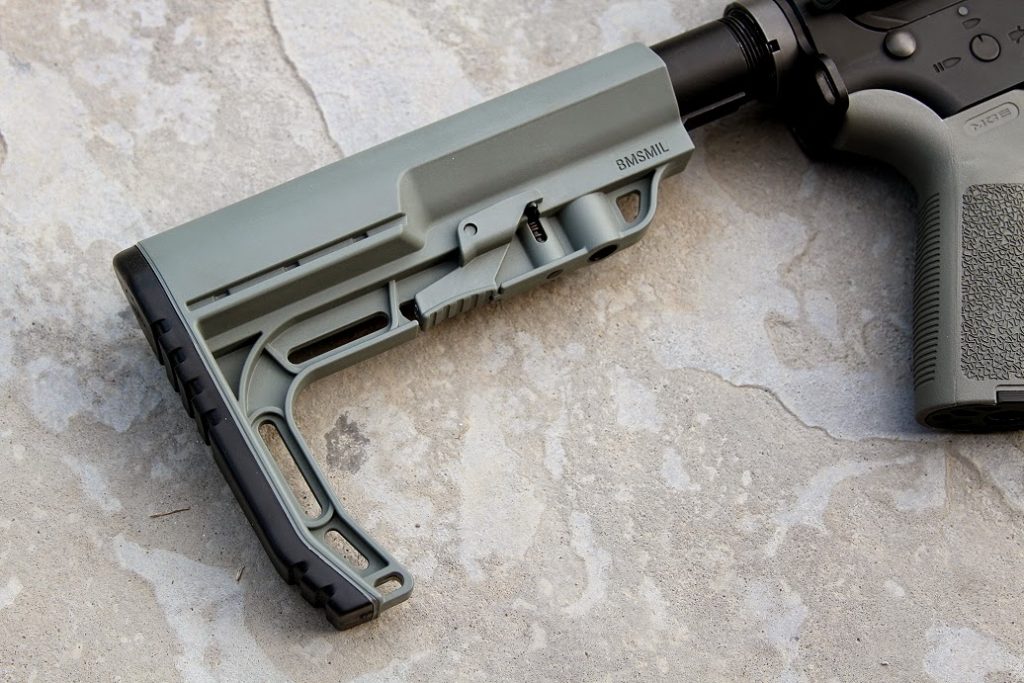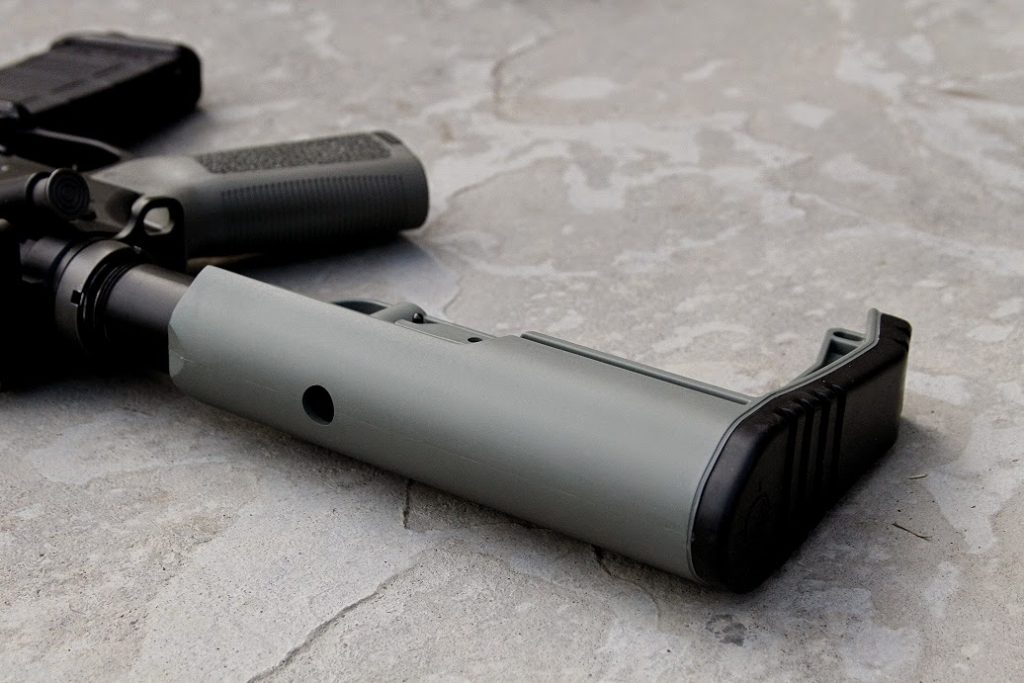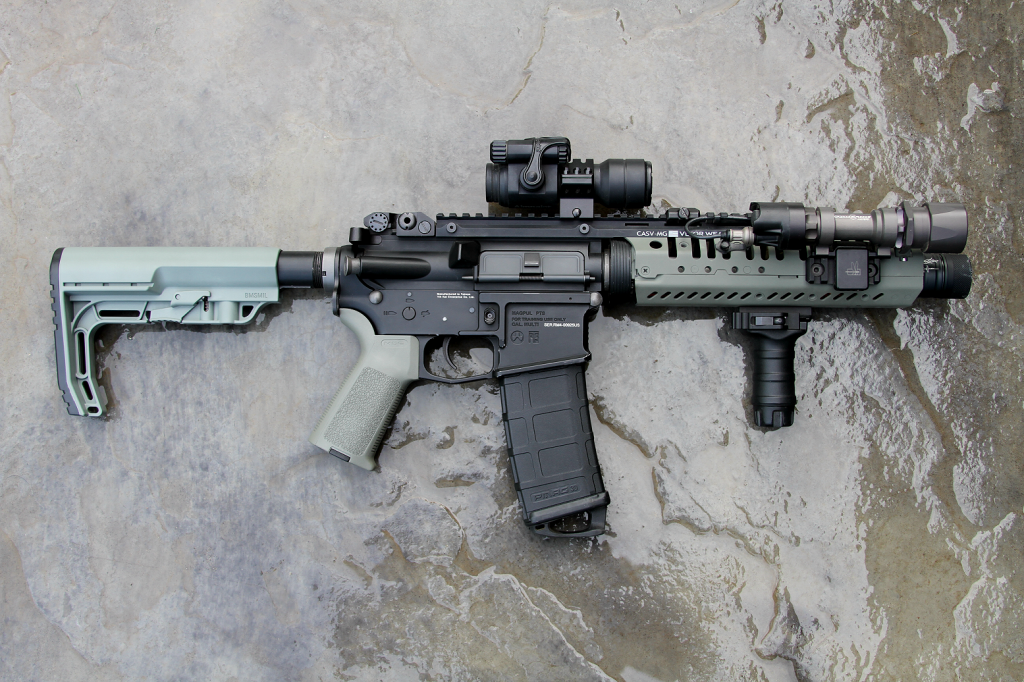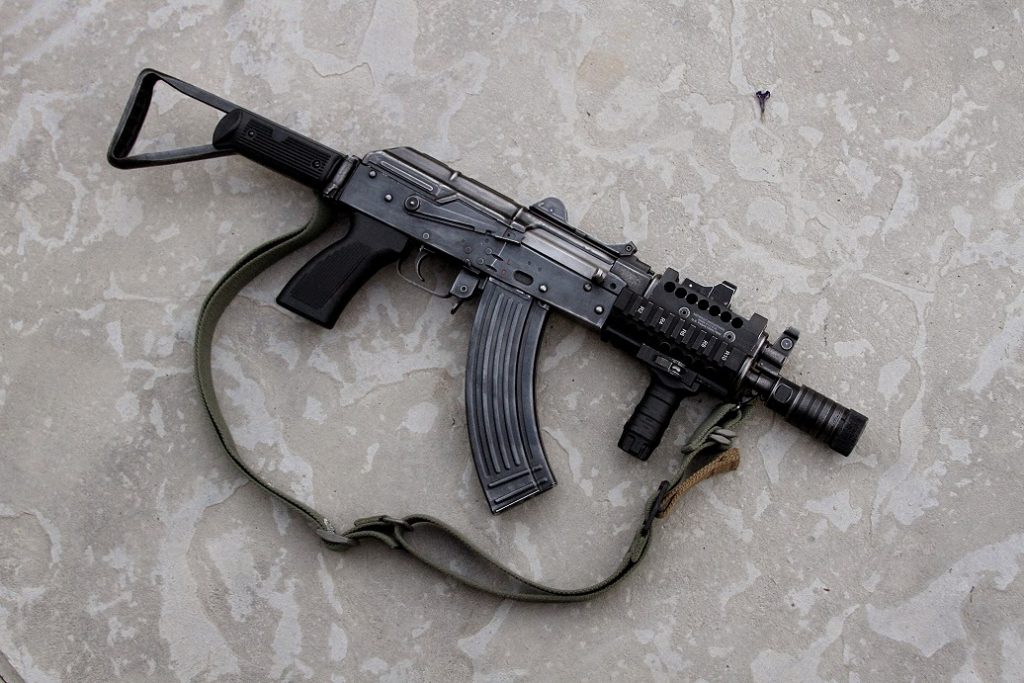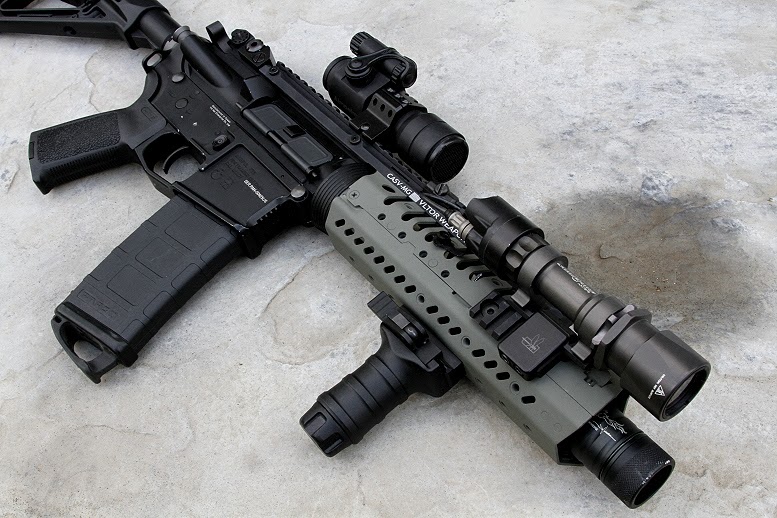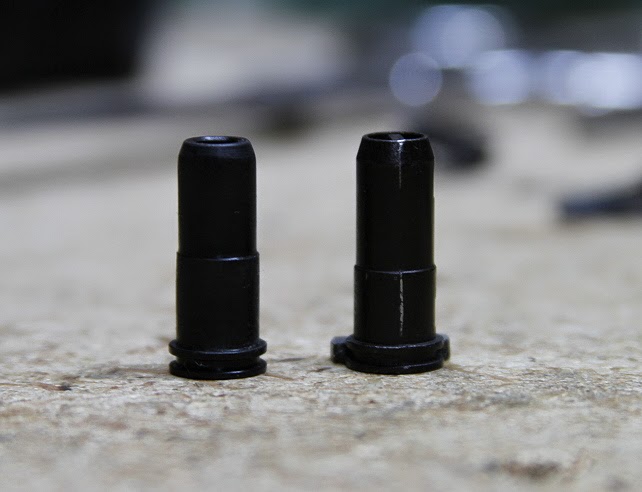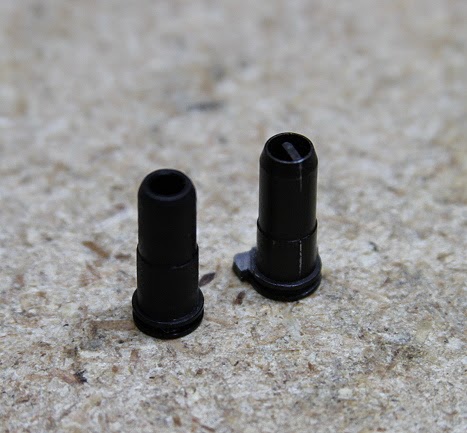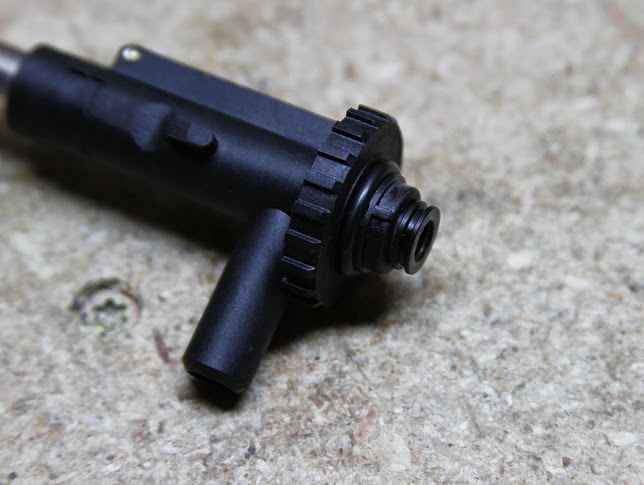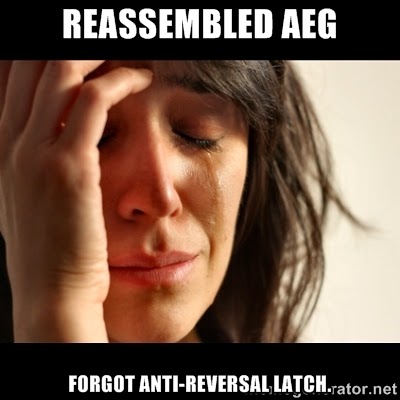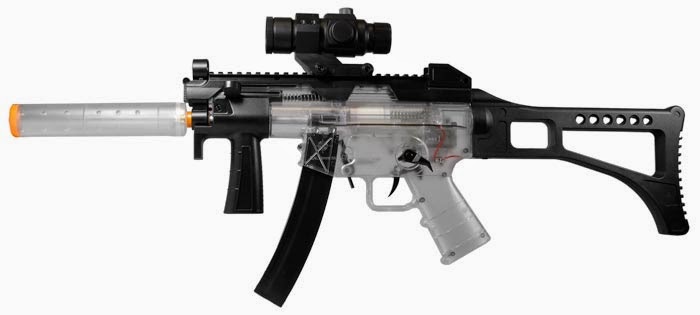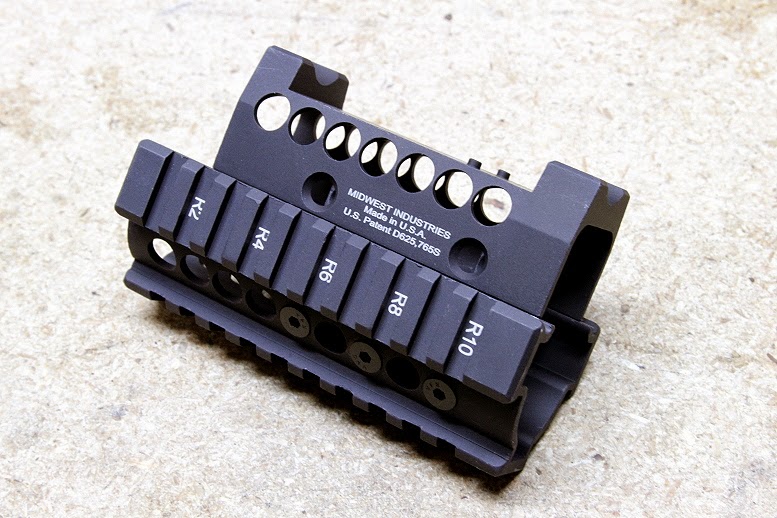 In the realm of aftermarket rail options for the Krinkov or AKS-74U style weapons, there exists few quality options. Among the top four are (in no particular order):
In the realm of aftermarket rail options for the Krinkov or AKS-74U style weapons, there exists few quality options. Among the top four are (in no particular order):
- Ultimak Railed Gas Tube. The lowest and lightest profile option available. Will allow co-witness. Does not come with, nor is there offered a lower railed handguard at this point in time. Compatible with most Krinkov / AKS-74U styles, but you will have to modify the gas tube to be large enough to accept your batteries.
- Krebs Custom Krinkov Rail. Built like a tank, weighs like a tank, and is almost as expensive as one too. Does not allow for co-witness.
- Samson Mfg. K-Rail. Fairly lightweight with no co-witness options available. Does offer a cutout for underfolder style stocks. Just as expensive as a Krebs option.
- Midwest Industries Krinkov Rail. The middleweight option that offers multiple optic-specific top covers for Aimpoint 30mm tubes, Vortex Sparc, Primary Arms Micro-Dot, Burris Fastfire, Trijicon RMR, Aimpoint T1/H1, or a picatinny railed top cover. Most top covers allow for co-witness.
There are, of course a few other options out there, such as Zenitco rails, which are high quality Russian setups, but are hard to find and command premium prices. FAB Defense makes an ugly rail setup, but to be bluntly honest, most Israeli gun accessories are garbage (especially FOBUS holsters) – so unless your significant other has cut off your allowance, I would avoid them.
This review will cover the Midwest Industries rail. For my particular purposes, I selected the model that has the top cover designed for the Trijicon RMR to be fitted onto a Real Sword Type 56-2 with a modified LCT AKS-74U frontset.
Features and specifications:
- 6061 Hard coat anodized aluminum.
- Mil-Spec 1913 picatinny rails.
- No gunsmith install.
- Weighs 9.5oz.
- 100% Made in USA.
- Average retail of $124.
These rails were originally a collaborative effort between US Palm and Midwest Industries. It should be noted that US Palm no longer appears to be involved in the process, so as such you will likely not be getting a rail with the US Palm trades (unless it’s old stock.) Overall fit and feel of this rail is that it is a solid piece of engineering though. While it is listed at 9.5oz without an optic, it feels like it has more heft to it. Every kit includes all mounting hardware, screws, blue Loc-Tite, and a small collection of Allen wrenches, plus a bumper sticker or two.
The whole apparatus basically consists of two sections: the lower handguard portion which contains three picatinny rails, and the top optic-specific top cover. I do not believe it is possible to simply use the lower handguard by itself without removing the mounting surfaces for the top cover, which would be a permanent modification. The handguard requires the use of an included barrel mount in order to stay attached to the weapon. If the barrel mount were removed, the handguard would then drop free as it does not use the weapons’ normal handguard retainer pieces.
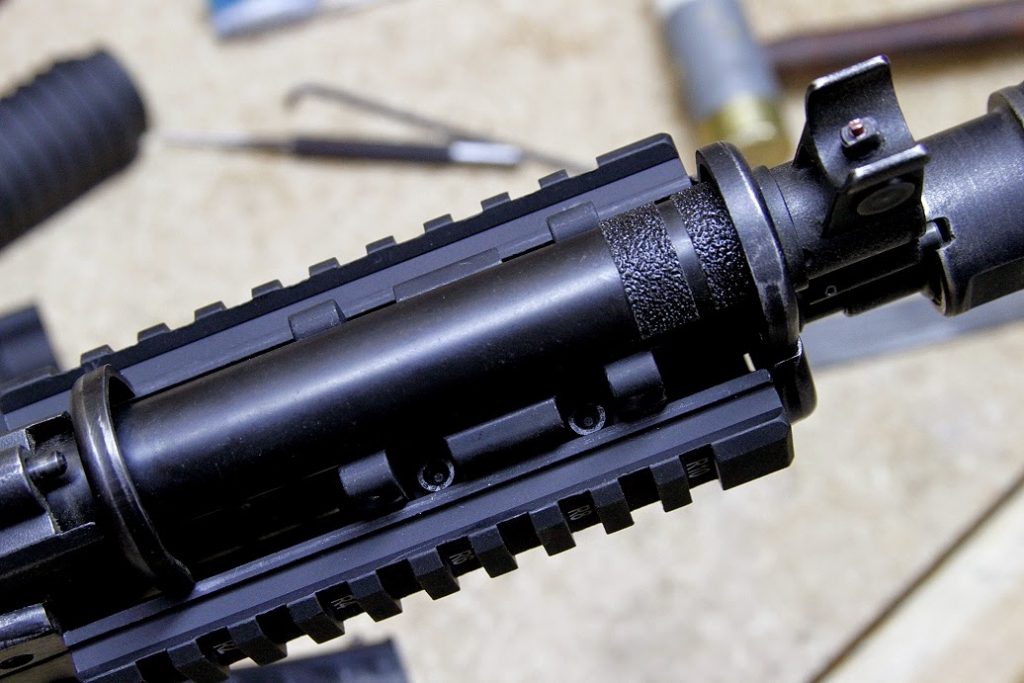 Installing the rail is ridiculously easy and can be accomplished in minutes. Simply remove your existing
Installing the rail is ridiculously easy and can be accomplished in minutes. Simply remove your existing
handguards – top and bottom. You will want to retain your gas tube (leave the handguard retaining hardware on there.) Attach the lower handguard first.You will notice that the lower half of the barrel mount has already been installed for you by the factory. All you have to do in this case, is simply attach the top half of the barrel mount using the included screws. Blue Loc-Tite has also been included with the rail kit, but as this is mounting to an AEG and it has very little recoil, I would posit that simply torquing down the screws will be sufficient. As it is, you need to at least have access to the internals of the gun should a repair be in order, which requires the removal of the barrel and handguards
The top cover is fastened on with four screws that install from the side into the barrel mount itself. Once tightened down, the whole assembly is rock-solid. There is zero wiggle or movement. I found the best way to ensure the handguard is attached to the weapon straight is to align the bottom picattiny rail to the flat underside of the AEG receiver. This will put the rail inline with your gun, and ensure nothing is off kilter.
Depending on your AEG design, you may have to insert your gas tube further into the barrel trunnion assembly. My original handguards were longer than the Midwest Industries assembly was, and this was necessary to eliminate the gaps I found upon first install. After you have installed the top and bottom handguards, install the bottom handguard retainer cap, then the top one – the top cap is what retains the bottom one. Then slide on your front sight tower and make sure it comes all the way back and indexes into the top handguard cap. You may have to give it a smack or two with a nylon hammer to make sure it’s positively seated. Crank all your set screws down and you should be finished!
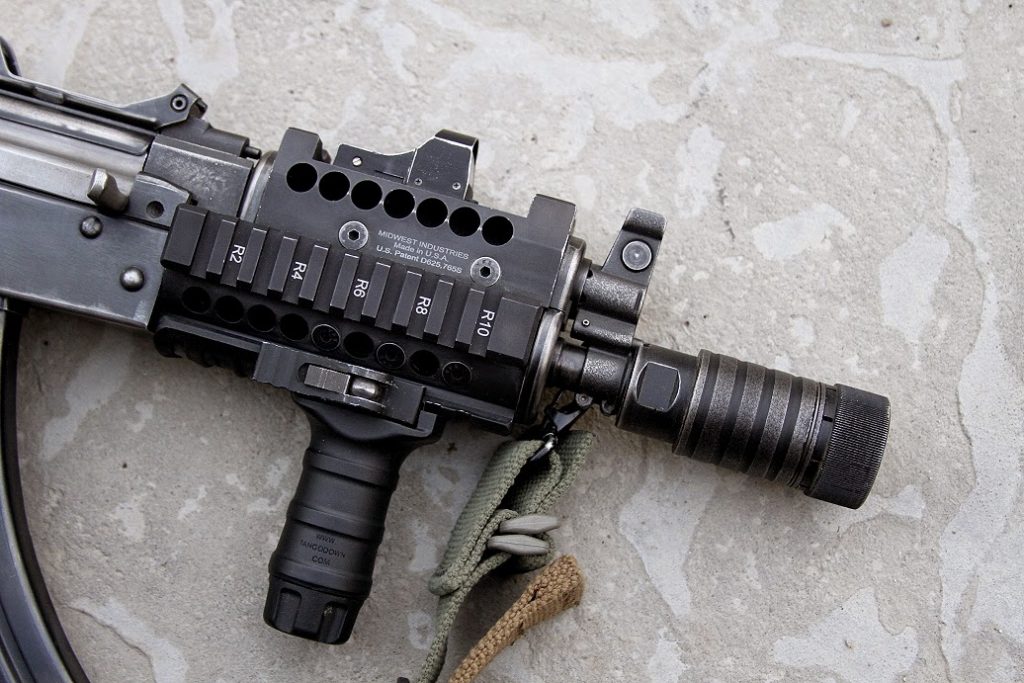
As I don’t have a Trijicon RMR (yet), I modified the top cover slightly by drilling and tapping two holes so it could accept a NC-Star micro-red dot I had on hand. While it doesn’t have quite the cool factor as the real deal, it will have to do for now. This particular model features the automatic brightness adjust and a green dot reticule. I also “weatherized” the finish of the rail a bit as it looked kind of weird being all new and shiny compared to the rest of the gun.
Notes and Observations
One thing you will notice as the end user of this rail is that it doesn’t exactly “flow” into the receiver of the gun. The handguard is rounded, whereas the receiver is squared off. This is more of an aesthetic complaint than a engineering defect or the like. Incidentally, Midwest Industries includes a receiver plug that is designed to fit into the empty space that is normally filled with a handguard tang – and this is where my chief complaint arises with this system.
Firstly, it is not mentioned that this plug is actually included with the rail kit. You have the option, of course, to purchase this separately – which is what I did. Not a huge deal . . . I’m just out an extra $7.50.
Secondly, the plug itself is made of the same anodized aluminum as the handguard. It is small and slightly difficult to work with. Real Swords use Chinese spec receivers, which are thicker and heavier than Russian / EastBloc type receivers (or any other AEG receivers in general). This requires the plug to be modified to fit – which isn’t easy as it’s small and slippery. I would have preferred the plug to have been made of high-density Delrin, or maybe glass-reinforced nylon as an alternative material. It would have been much quicker and easier to install that way. For someone who may be lacking metal-working tools, I could see it presenting a tougher problem to solve. You can of course ignore and not use it if so desired.
Being designed for the Krinkov / AKS-74U platform, this rail doesn’t have a tremendous amount of real estate. If you’re used to extended forearm or thumb-over-bore techniques, you’re looking at the wrong rail. This is designed for a fairly tight package, and as such, you will need smaller and more compact accessories mounted to it. In particular, vertical foregrips. Whether you grip them broom handle style, or use them as a modified handstop (which I personally do), you will need one short enough to ensure the magazine can be extracted properly. Certain longer foregrips, like the Knights Armament style or say, a GripPod, will interfere or prevent extraction of a magazine. This is because an AK magazine must be rocked forward to be removed.
Vertical grips that do work (personally tested and verified):
- Tango Down Stubby (QD or slide-on style.)
- Magpul MOE MVG
- Magpul AFG II (fits perfectly)
- Magpul AFG I (fits, but is longer than Ver. 2, so it sticks past the rail a bit)
- Magpul XTM handguard stop kit (it clears, but really crowds your grip space – not very ideal on this setup unfortunately.)
- LaRue Tactical LT-FUG
For mounting a flashlight, you will probably want to consider a forward mount, like the Haley Strategic Thorntail design, or the Magpul Rail Light Mount. Especially if you’re planning on activating it with your support hand thumb or independent of a tape switch.
Conclusions
Overall I am fairly pleased with this setup. Once I get a proper Trijicon RMR mounted up, I think it will be the cats meow as it will offer co-witness and excellent cheek weld for this platform. At $124, I do not think it is overpriced – especially for a made in the USA product that is often awash in exorbitantly priced firearm accessories. Midwest Industries has always made excellent products, and this is no exception. The only thing that might improve it would be a design that had a seamless flow into the receiver (kind of like the Zenitco rail) and maybe a Keymod system instead of full picatinny rails. I suspect this latter improvement is already in the design works, however, as they just released a Keymod rail for the Yugo M92 style AK’s.
